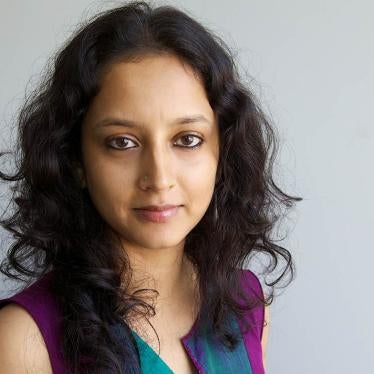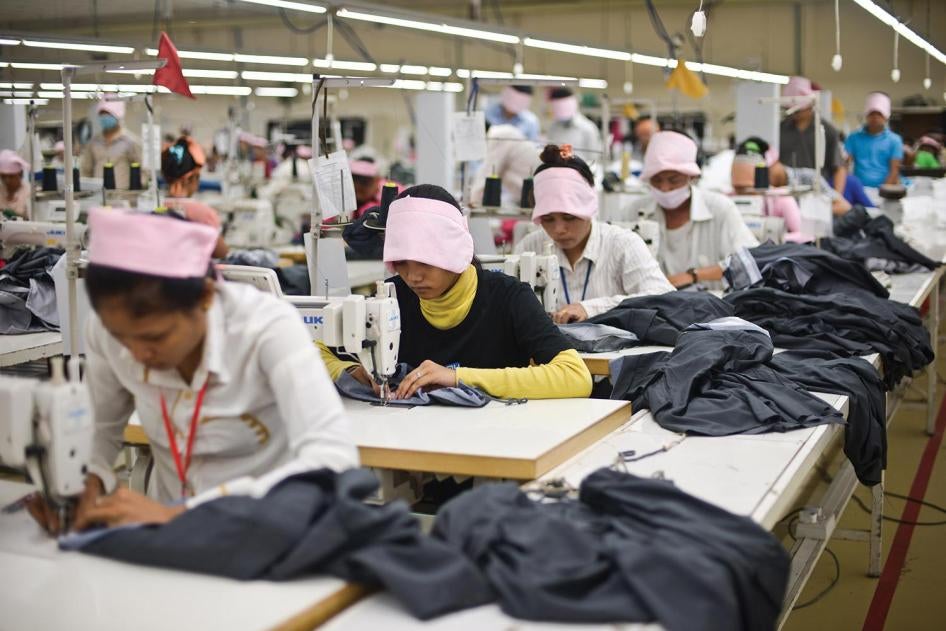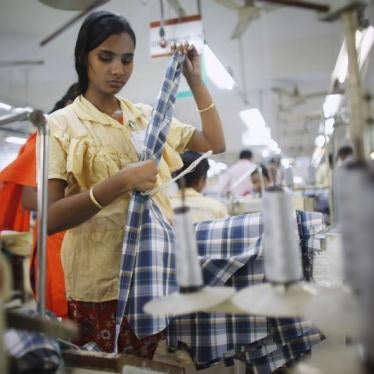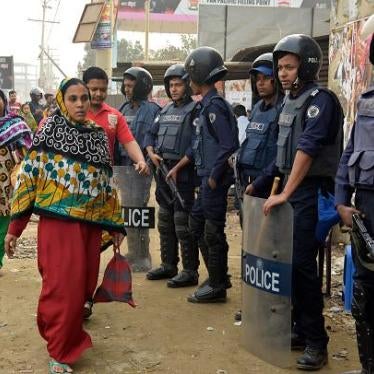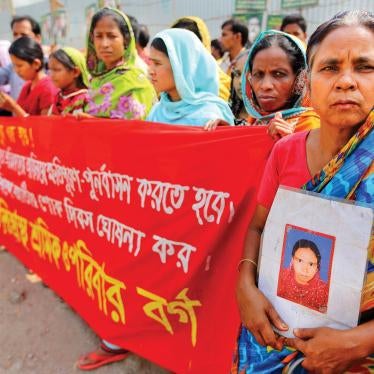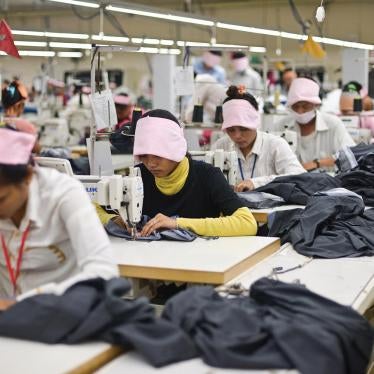“Whore.... Do you think this is a brothel? You must meet the production demand here. If you want to continue to work here, listen to us.”
This nasty threat is a snapshot of the harassment that supervisors and managers heap on many Bangladeshi garment workers. Workers say many factory bosses lash out like this for things as simple as attempting to exercise the right to refuse overtime or take sick leave.
In the same factory, one manager pressured multiple garment workers to spend nights with him at a hotel. Sick of his unwanted sexual advances, workers summoned the courage to confront him as a group. He denied it. His managers didn’t respond. But then the women who protested the harassment faced retaliation. Managers made their lives hell—making them work longer hours with higher production targets—and labelled them “unproductive workers.”
If garment workers didn’t face retaliation for exposing sexual harassment, many of them would be screaming #MeToo at the top of their lungs. Their experiences are part of the global crisis of workplace sexual harassment, less visible in places like garment factories but no less important than the high-profile cases involving Hollywood, the media, and political figures.
Governments and employers need to take a hard look at whether laws, policies, and practices to prevent, identify, and remedy sexual harassment are working—not just in their own companies, but also in their supply chains.
Over the last five years, Human Rights Watch has documented sexual harassment in garment factories in Cambodia, Bangladesh, Burma, and Pakistan. We found that abuses were rife, legal protections did not exist or were weakly enforced, and efforts to audit factories or monitor for harassment were ineffective.
Governments have the primary human rights obligation to combat sexual harassment. But even when they adopt laws or issue policies, implementation has often been dismal.
The High Court Division of the Bangladesh Supreme Court issued guidelines in 2009 on sexual harassment. India enacted a law to tackle workplace sexual harassment in 2013. Both seem to have had little effect in the garment factories in Bangladesh and India. Workers we interviewed in Bangladesh this year did not know about the guidelines and were not aware of any cases in which harassers were held accountable.
Similarly, in Cambodia, workplace sexual harassment is forbidden under the labor law. But workers said that it was common for supervisors and managers to pinch garment workers’ buttocks, use sexual expletives, and grope workers while “teaching” them how to perform their tasks. The Cambodian labor law limits the use of short-term contracts, but they are common. Workers on these contracts have plenty to fear. Complain about sexual harassment and your contract probably won’t be renewed.
Apparel brands also have a responsibility to prevent human rights abuses, including sexual harassment, throughout their supply chains and to identify and address any abuses. But, as with governments, their efforts are falling short.
Individual brands, and brands that are part of multi-stakeholder initiatives, rely on brand compliance teams or third-party monitoring of factories to address human rights risks in their supply chain. But these methods are not suited to spotting sexual harassment. Many brands hire third parties to conduct code-of-conduct audits or audits applying standards developed by multi-stakeholder initiatives. In theory, such audits are supposed to examine workplace discrimination, including sexual harassment. But they are often not up to the task.
We found that multiple factors impede the effectiveness of factory-based audits in identifying labor abuses, including sexual harassment. Auditors frequently meet with workers in mixed groups for short periods. This is not conducive to revealing sexual harassment, which is often stigmatized. Workers also say they are intimidated because these discussions are inside factory walls, so managers know exactly who is speaking with the monitors.
It's not only governments and brands that are struggling with how they monitor for and deal with sexual harassment. The International Labour Organization (ILO) has tried, with very inconsistent results, to identify sexual harassment. Better Factories Cambodia, an ILO factory-monitoring program that is considered one of the best models, reported in 2017 that its program detected “no sexual harassment” in almost every factory monitored. Contrast this with a 2012 ILO study on gender equality in the garment industry, which found that 54 percent of workers surveyed reported harassment. Clearly, when it comes to detecting and correcting labor abuses, methodology matters.
Governments need to enact and enforce labor laws, including those specifically on sexual harassment in the workplace. They should ensure that labor laws are not weakened to create more precarious contracts out of a desire to be more “investor friendly.” Workers would benefit from a comprehensive review of sexual harassment responses, with meaningful input from women and workers’ organizations.
Brands should invest in specialized training programs for supplier factories to prevent and respond to workplace sexual harassment. They should support workers’ freedom of association, especially the creation of workplace committees against harassment, that have input from garment workers and experts, including on women’s rights. Brands should also ensure that periodic monitoring on gender issues includes the active participation of women workers and experts, including on women’s rights.
Finally, a brand committed to gender equality in its supplier factories will move beyond rhetoric and rectify purchasing practices that contribute to precarious contracts. Workers on short-term, daily wages, and other casual forms of employment are far more vulnerable than workers who have employment security and legal protections against arbitrary dismissals. Brands should adopt strategies to enhance and facilitate workers’ ability to bargain collectively for better working conditions, and to promote more stable employment.
Garment workers have long paid the price of failed efforts to combat sexual harassment. They need the support of government and industry to stop this scourge. The boss who calls them whores and makes them work when they are sick should be the one who gets punished.
